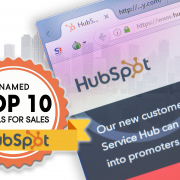The importance of the proper Follow-up
You just attended a big networking event and you’re excited about the potential from the day’s activities. Assuming you’ve done your homework (gathering, inputting and studying the information from your CRM system), you know the next step is to do a follow-up with your leads, but what is the right approach?
The importance of the follow-up sequence
A quick follow-up keeps the conversation going, so make sure to touch base the day after that first meeting. If it was a large event, perhaps people are traveling back to their homes or offices and won’t have time to read a lengthy email. A quick and simple email that states your appreciation can make your client feel important and keep the communication line open. This will also cultivate, at an early stage, a positive relationship. By the second or third correspondence, you can already gauge the individual’s interest and determine your next move.
 Quality is Key
Quality is Key
People can usually tell when you are sending a generic follow up or even worse, immediately putting them in an automated drip campaign. For high value prospects, a personalized message should be sent. The personalization doesn’t have to be long or complicated. You can simply reference a topic of mutual interest that was discussed at the initial engagement or congratulate them on a personal achievement they shared. After a day of networking, we know how hard it can be to recall the details of these discussions, but ensuring you have those details written down and accessible makes the difference between a generic and impactful follow up. Leveraging a CRM system, a voice to CRM add-on and combining it with the discipline to always ensure the engagement details are captured while they are fresh in your mind, will enable you to stand out from the crowd.
Timing
Determining when to follow up and at what interval can be tricky. Wait too long and the prospect might have already forgotten you. Acting on it too soon and you run the risk of coming across as a hard sell. Although there is always the remote possibility of succeeding, that would be the exception and not the norm. Proper timing often spells the difference between closing or losing a prospect. Since every client has a different personality, you can customize your follow-up timing for those select few. But to determine when to make a follow-up, it’s a good idea to have a general set of rules.
Third time’s the charm. Set the number of follow-ups to three times per prospect. This means that if you don’t get a response after the third time, then maybe it’s time to move on to the next. But don’t delete the prospect, just put them on your list of future follow ups (perhaps in a quarters time?), which leads us to;
Rekindling
We think that a non-responsive prospect is a non-interested one, but it can be for a number of reasons. There are times that the message you sent failed to get through (it happens);or maybe the person is preoccupied with something else; it could also be that what you’re offering may not be the priority at the moment. Whatever it is, don’t forget about them, give them some time and space and then rekindle the connection. Wait for as short as a month and then you can send them a “catching up” message – but never throw out a contact.
Making it fool-proof and not making a fool
Having incomplete or error-filled data captures can lose you all those leads you worked so hard at. You need the right information to make the correct follow-up on all those prospects. The more details from the conversation you can recall in your follow up message to make the discussion meaningful and personal, the more likely you are to succeed at the follow up engagement. Leverage your CRM data, ensure that data was entered while the conversation was fresh in your mind. Services like Hey DAN, a Voice to CRM service that provides fast and efficient data capture will populate your system with all the information you deem important. It’s as simple as dictating all the info into your phone and letting the technology do the rest so you can move on to the next engagement while ensuring those important conversational details are captures and available for when you need them. So the next time you make a follow-up, confidently take that client information and send those follow up emails that stand out from the crowd..

 Quality is Key
Quality is Key




